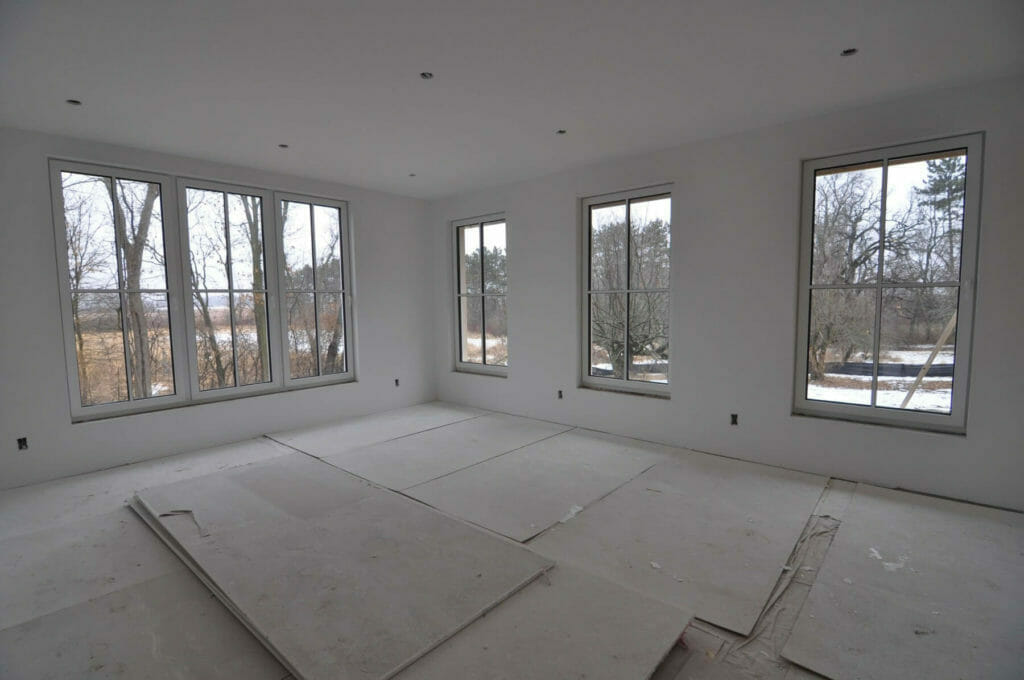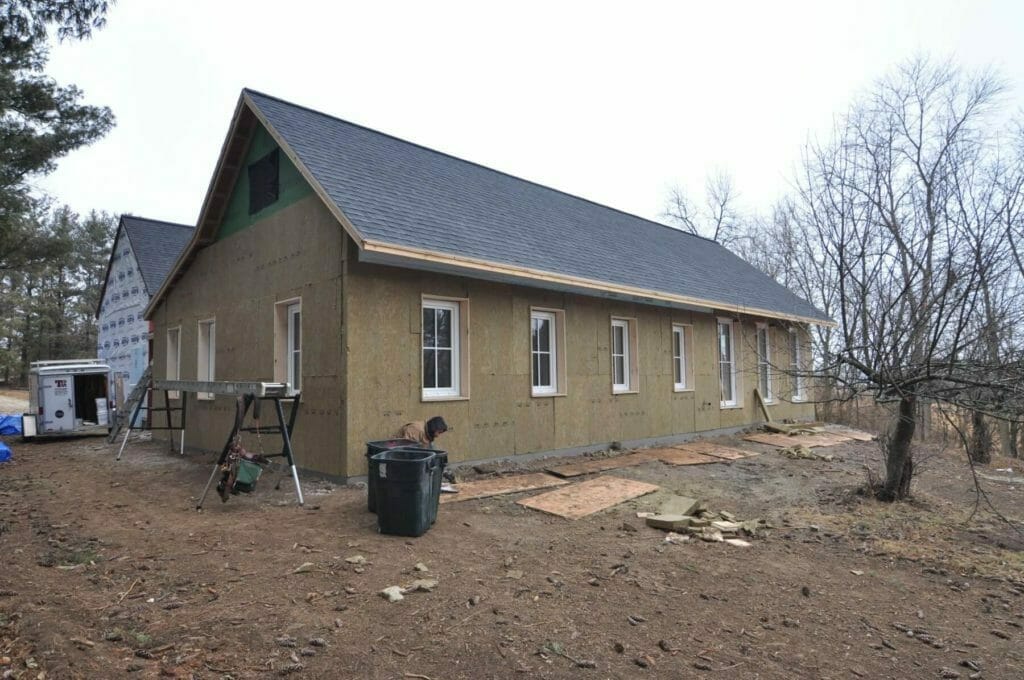The Wall and Roof Systems
A combination of super-insulation and excellent air-tightness.

The walls of this house are 2×8 construction with dense-pack cellulose insulation (R-27), ZIP sheathing for the air barrier and 6” Roxul insulation (R-24) for a total insulation value of R-51. To maintain a continuous air barrier, the Stego Wrap is connected to the ZIP sheathing on the walls which doubles as the air barrier.
The roof is constructed of manufactured trusses with loose-fill cellulose insulation (R-90). The zip sheathing continues onto the ceiling plane of the roof trusses. The joint between the ZIP sheathing on the walls and ceiling were taped and sealed in order to create a continuous air barrier.
The windows, manufactured by Kneer-Sud, are high-performance, triple-paned, extremely air-tight, tilt and turn windows with thermally-broken frames. They are heavy and beautiful and easy to operate. The doors were also sourced from Kneer-Sud and are equal in quality to the windows.
The series of photos below lends more detail to the wall and roof construction. Stay tuned for our next blog post, which will cover the mechanical systems and blower door results.











Read Our Passive House Series
Back in 2017, we wrote a series of blog posts as we were building a passive house for a client on Mud Lake in McFarland, WI. We invited our readers to join in and follow along with our process of building this passive house—from the foundation to the wall and roof systems and beyond.
 Tour TDS Custom Construction’s Latest High-Performance Home Build
Tour TDS Custom Construction’s Latest High-Performance Home Build
Sunday, December 3, 2023, 11 am -1 pm Building resilient…
 Sustainable Building & Remodeling
Sustainable Building & Remodeling
Sustainability for your home can mean a lot of things. This blog post breaks it down below into three easily digestible parts: from sustainable remodeling to deep energy retrofits and passive home construction.
 Mud Lake House Update: The Mechanical Systems
Mud Lake House Update: The Mechanical Systems
Follow along for the continuation of this blog series—where we’ll first update you on the mechanical systems (heat and ventilation) that we used for the home, then share some interesting data points on the home’s energy performance.
Written by Christi Weber, Project Designer at TDS and Wisconsin’s first Certified Passive House Consultant. She has been in the design field for 10 years, specializing in residential projects, Passive House, Net-Zero and High Performance homes.

Get In Touch
Tell us about your project, and Jackie, our Selections Manager, will get in touch with you to get started. Contact Jackie using the form below or at jackie@tdsdesignbuild.com.
Published on Jun 12 2018
Last Updated on Dec 21 2023
Categories: Passive House
Tags: cellulose, energy efficiency, high performance, insulation, new construction, new home building, passive house, roof, wall, zip sheathing


